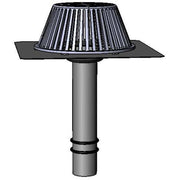Retrofit Drains
What are retrofit drains?
Retrofit drains are a type of drainage system that is installed in an existing building or structure after construction has already been completed.
What are the use cases for retrofit roof drains?
A retrofit drain can be used on a roof to improve the drainage system and prevent water damage. Retrofit roof drains are installed after the initial construction of the roof and are designed to collect and redirect water from the roof surface to prevent standing water or flooding.
Retrofit roof drains come in a variety of styles and sizes to accommodate different types of roofs and drainage needs. Some common types of retrofit roof drains include scupper drains, roof drain inserts, and gutter systems.
Why do professionals choose retrofit roof drains?
Some reasons why builders may choose to use retrofit drains include:
- Solving drainage problems: Retrofit drains can be used to solve existing drainage problems, such as standing water or flooding in a basement or crawl space.
- Upgrading existing drainage systems: Older buildings may have outdated or insufficient roof drainage systems that need to be upgraded to meet current building codes and standards.
- Improving property value: Installing a retrofit drain system can improve the value of a property by making it more attractive to potential buyers or renters who want a home with a reliable drainage system.
- Preventing future damage: Retrofit drains can help prevent future damage to a building's foundation, walls, and floors by directing water away from the structure.
- Compliance with regulations: Retrofit drains may be required by local building codes or regulations, especially in areas prone to flooding or other types of water damage.
Overall, retrofit drains can be a cost-effective and efficient solution for addressing drainage issues in existing buildings, improving property value, and preventing future damage.





